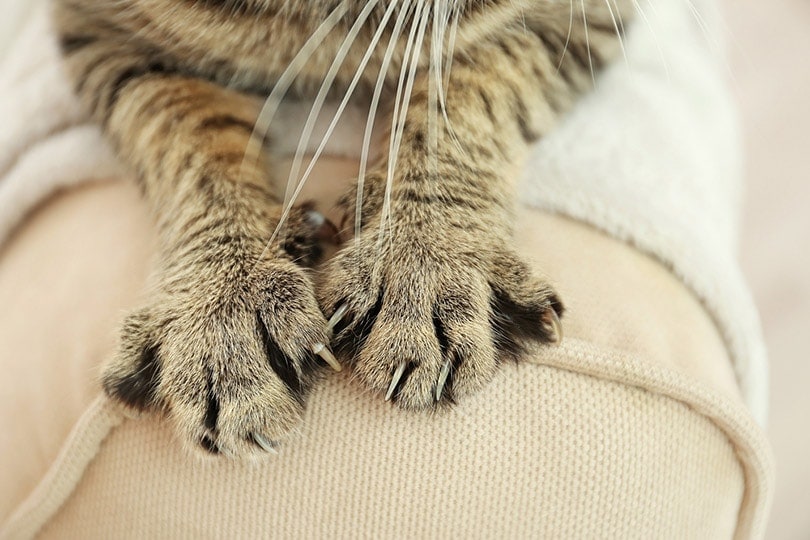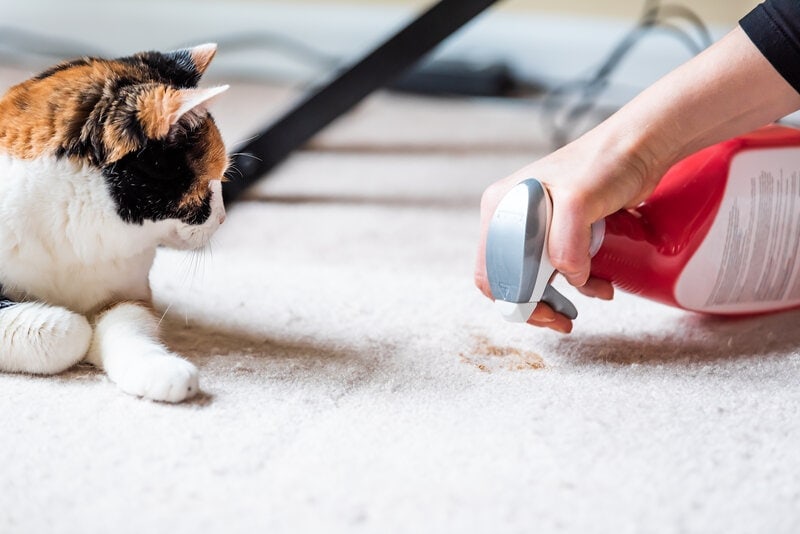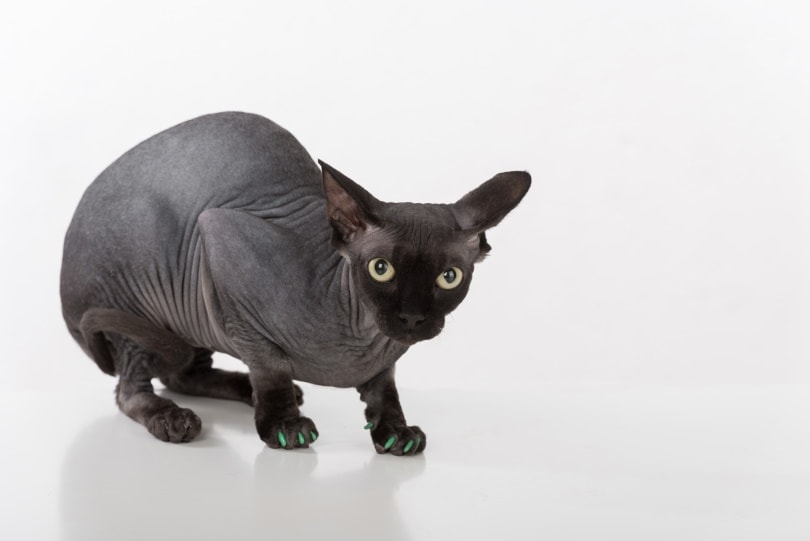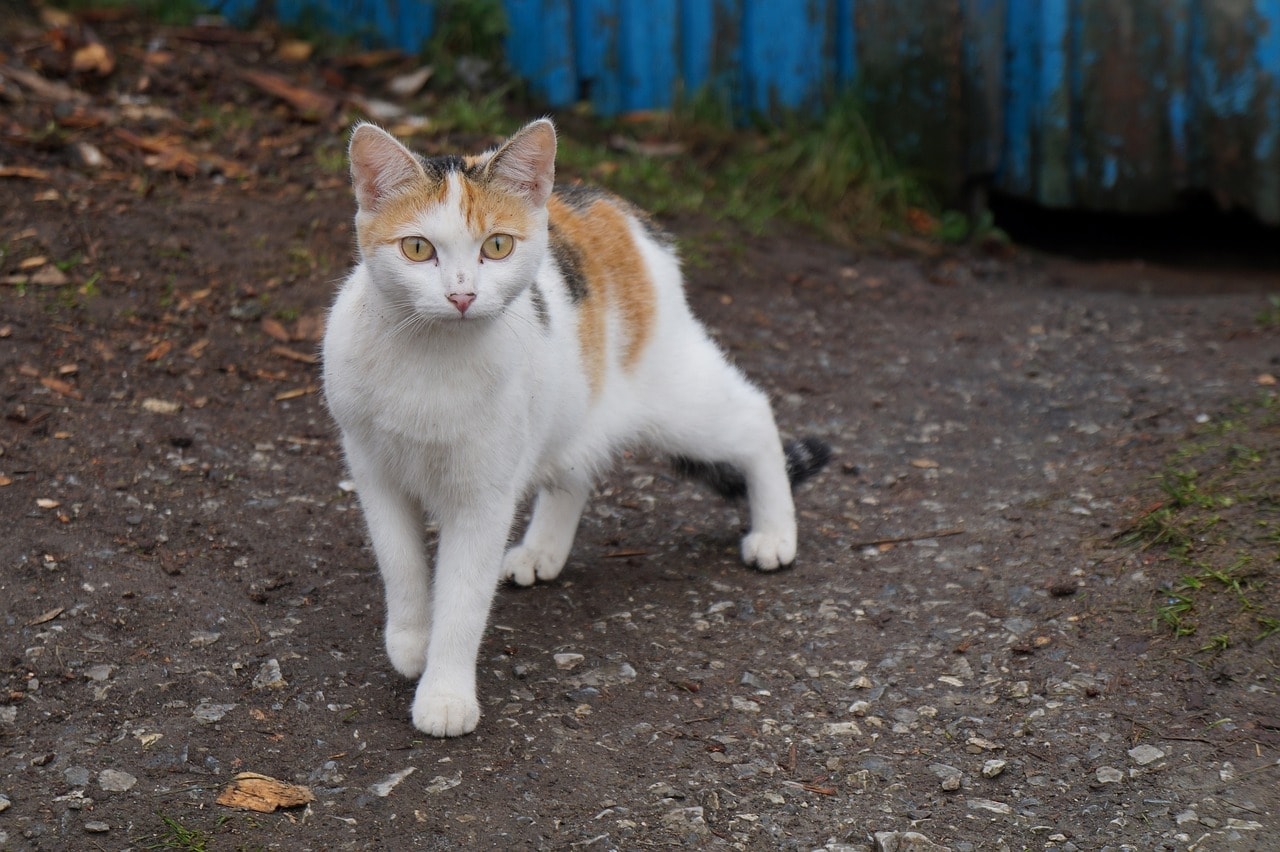If you have a cat, chances are you’ve found hollow claw-shaped pieces of nail in various locations around the house. This is completely normal and nothing to be concerned about. But how and why do cats shed their claws?
Let’s take a closer look at cat claws
Cats’ claws are made of keratin, the same protein that makes up our own fingernails. At the very center of each claw is the quick – the part containing the blood vessels and nerves. Claws are formed in layers surrounding the quick that are constantly renewing. As new layers form from underneath, the oldest, outer layer peels away and is shed, revealing a new sharper claw underneath. The entire cycle takes a few weeks and will repeat continuously throughout your cat’s lifetime.
Cats’ claws play an essential role in self-defense, hunting, climbing, and balance, so this cycle of renewal is important to ensure they remain sharp and in full working condition. Every single one of your cat’s claws undergoes the same process, and not all at the same rate, so it isn’t unusual to regularly find old claw husks around your household.
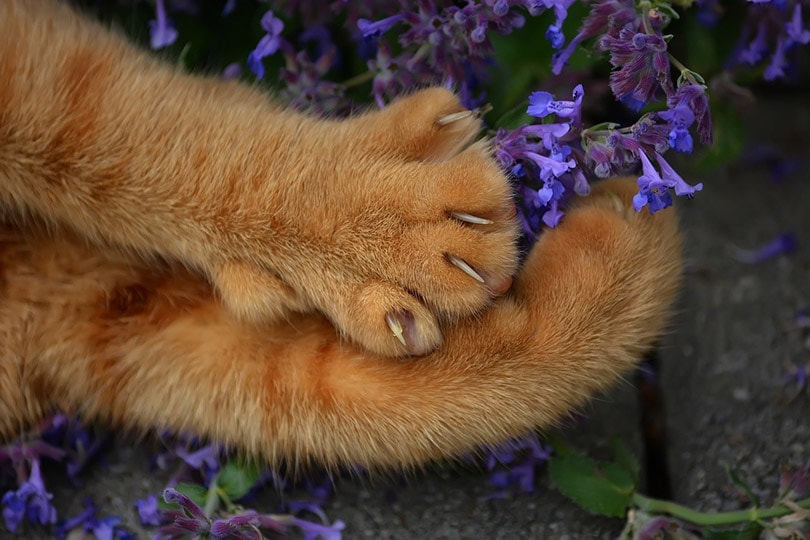
How do cats shed their claws?
The outer layer of your cat’s claws will peel away and shed naturally but cats will often help speed this process along by scratching, hopefully on a scratch post but sometimes on your carpets or furniture! You might also see your cat chewing at his claws while he is grooming himself; chances are he’s pulling off those outer claw shells with his teeth, to reveal sharp new weapons underneath!
What is cat scratching?
Cats scratch by dragging their claws downward on a vertical surface, or towards them on a horizontal surface. This action is called “stropping” and is what helps to remove the outer shell of their claws. Some cats prefer scratching on either a horizontal or vertical surface and some will scratch on a combination of the two. You might have also seen your cat drag himself along the floor by his claws – this might not be great for your carpets but is another example of how cats loosen and shed those outer claw husks.

Why do cats scratch?
Scratching is an instinctive, natural behavior that not only helps to keep your cat’s claws in tip-top condition but also plays an important role in communication with other cats. All cats have scent glands in their feet that release scent onto the surfaces they scratch. This scent, combined with the visual damage caused by scratching, and the shed outer claw shells, are all ways in which cats mark their territory and communicate with other cats.
Some cats also scratch to initiate play or even to seek attention from their pet parents, particularly if this has worked previously! The most important thing to remember is that scratching is a normal and instinctive behavior so you should never punish your cat for scratching, even if it’s on your nice new sofa! Less commonly, scratching can be anxiety related. If you think this might be the case, then speak to your veterinarian for more advice or referral to a feline behaviorist.
Feliway is a synthetic pheromone that can help deter your cat from scratching in unwanted places. It is available as a spray or plug-in diffuser and research has shown that cats are far less likely to scratch in places where this pheromone is released.
What can I do to help?
One of the best ways to help is to provide suitable scratching surfaces, especially for indoors-only cats. You might need to provide both horizontal and vertical options if your cat does both. Ensure that scratching posts and surfaces are rigid and do not move when your cat scratches. They should be tall enough or long enough for your cat to stretch the full length of his body when using them. You can encourage your cat to use scratching posts or surfaces by placing them in areas that they visit regularly. If you have a multi-cat household, ensure there is at least one scratching area per cat.
Elderly cats can sometimes struggle to maintain their claws through scratching and grooming due to arthritis and other health issues. You can help by trimming their claws to prevent them from growing round and curling into their pads. Cutting their claws also helps loosen the outer layer so that it can be shed more easily.
Only cut your cat’s claws if they live exclusively indoors as outdoor cats may need their claws for self-defense, either from other neighborhood cats or to get themselves out of difficulty. If you have a kitten, handling their feet regularly from a young age will ensure they are more accepting of nail trims as they get older.
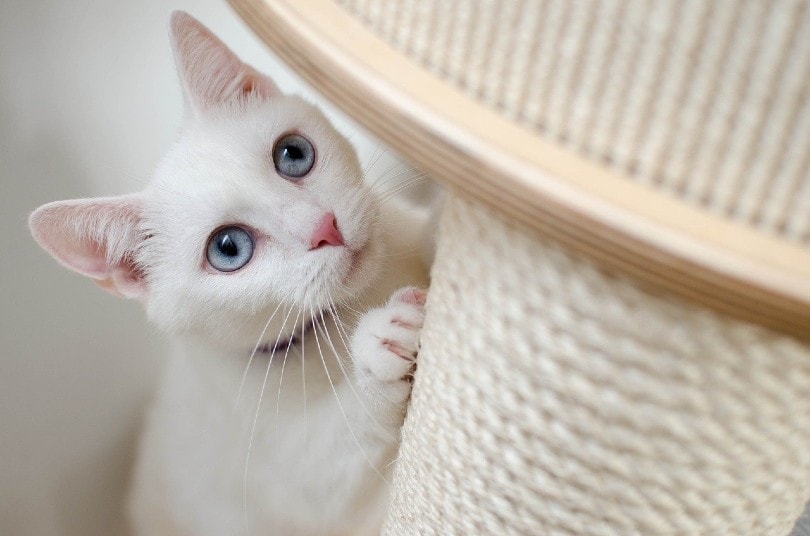
When should I be concerned?
Claw shedding in cats is a completely normal process and nothing to worry about. Bear in mind though, the pieces of claw that you find should be hollow and dry.
If you were to find a solid-looking piece of claw, it is more likely that your cat has torn one of his claws out. If this were the case, there will likely have been bleeding, so check all of your cat’s toes for signs of blood or an exposed quick.
Your cat is likely to be in pain if this happens, and infection can develop in the exposed quick so take your cat to the veterinarian straight away to get him checked out.
Conclusion
All cats shed their claws; this is a completely normal process and is no cause for concern. Help your cat to maintain a healthy set of claws by providing several suitable scratching surface options, both horizontal and vertical. Providing these will also help to minimize the damage to your carpets and furniture! If you have an elderly cat, you can help him by keeping his claws trimmed to prevent them from in-growing and encourage shedding of those outer layers.
Featured Image Credit: Africa Studio, Shutterstock


